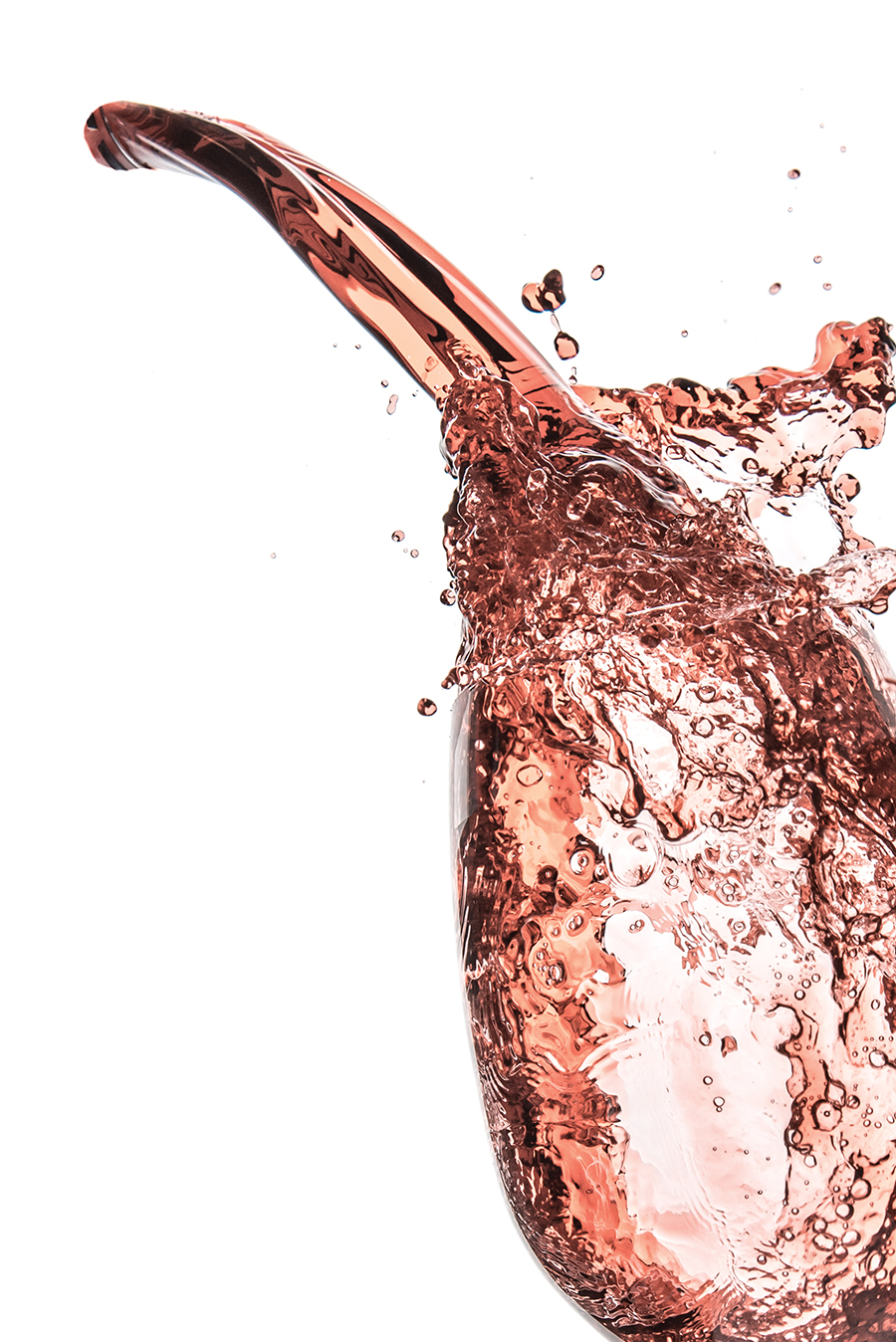By Matthew Debord
HQ 97 | SPRING 2017
When winter turns to spring and gradually to summer, everybody is in the mood for a change. But sudden change can be jarring, even when it comes to wine, and that’s why we have Rosé.
For a long time, to my mind anyway, Rosé was more of a European thing. In America, when we started to get serious about wine in the 1970s and 1980s, we went for some big, rich, juicy, flavorful whites and reds, such as Chardonnay and Cabernet Sauvignon. The idea of lighter spring and summer wines, meant to be drunk in the afternoon on warm days, took a while to develop.
In France, the home of wine, Rosé is associated with the country’s southern regions, chiefly Provence. But over the past decade or so, French Rosé has gained much more widespread exposure and now is routinely imported to wine stores around the world. It’s the perfect wine to ease you into the warmer seasons.
In fact, the whole genre of “pink wines” has become much more widespread. We now get not just French Rosé, but also Rosé from Spain and Italy — the other two big wine-drinking countries in the so-called Old World — and even Rosé from the United States.
At this point you might be saying, “Oh yeah, I know American Rosé — it’s called White Zinfandel!” But White Zin isn’t really a proper Rosé, although when it first appeared in the 1980s, it was America’s predominant pink quaff. It was almost a soda-pop type of wine, and it gave rise to the entire “blush category” of wines that were pink, uncomplicated, sweet and slightly fizzy.
Wine snobs detest blush and aren’t afraid to say so, but they tend to be okay with Rosé due to its Old World reputation and lack of sweetness. Many French Rosés are actually quite dry, and some lack a generous amount of fruit flavor, serving up a thinner, even slightly bitter cluster of tastes (which Europeans like).
Over the last 10 years, so many domestic Rosés have debuted, and so much more Rosé is imported from other countries, that it’s now hard to find good old White Zins. The real thing has taken over.
A quick word about Rosé Champagne: yes, this is for real and very popular in France. It is what it sounds like: pink Champers. You see it showing up around Valentine’s Day, but, for the most part, it hasn’t really taken off in the U.S.
If you let red wine grapes go through a quicker winemaking process than that of full-on red wines, you’ll get Rosé. The contact between skin and juice is what creates the pink color, although in some cases the juice is separated and added back in later for coloring (a process known as “saignée”). The pink color can vary widely, from a pale floral tone to a deeper near-red tinge.
Price-wise, you can find Rosés ranging from less than $10 to upwards of $50. One of the more famous is Domaines Ott, from Provence, and it can set you back over $40. It comes in a traditional-shaped bottle, and it tends to be pale salmon in color.
A newer French Rosé is Château Miraval, which, believe it or not, is a wine made by Brad Pitt and Angelina Jolie. It’s about $20.
From my perspective, because Rosé is meant to be drunk with lighter foods when the weather is warm, and because it will usually be chilled, you can buy a relatively cheap example and get the job done. I’m actually a fan of the Spanish version, called Rosado; and because I live near New York, I also drink a lot of American Rosé produced on Long Island (it’s a good idea to drink local whenever you can).
By chilled, I don’t mean ice-cold by the way. However, I do think you can let Rosé get a bit colder than white wines. Also, don’t be ashamed to add some ice or use Rosé to make a wine spritzer.
As far as food pairings go, Rosé doesn’t go well with, say, chili or barbecued pork with a sauce. It’s a “lazy weekend afternoon” type of wine, good with picnic fare, cheeses, sliced meats and spring or summertime pastas and salads. We sometimes drink it with grilled chicken or shrimp, but that’s about as far as I’ll take it. A longtime go-to pairing for me is Rosé with a fresh mozzarella cheese sandwich on grilled bread.
Ultimately, Rosé is more about setting a mood than delivering a memorable wine-drinking experience; it’s a necessary piece of an overall puzzle, a wine to drink outdoors in sunshine, at a garden party or a concert or as part of a lunch that involves really simple food. For me, when Rosé comes inside and ends up on the table with more robust eats, it loses something.
With that being said, Rosé isn’t boring. From the aforementioned nutty, bitter flavors of some French versions to the richer, fruitier qualities you might find in a Rosé from the U.S., there seems to be a style for every personality. My advice is to find a Rosé you like and that your friends enjoy, then buy a few cases to keep on hand through the warmer months. Don’t make yourself crazy trying 10 or 15 different ones — you have more important things to think about, and your Rosé is just there to help you enjoy yourself, and to enjoy life.




